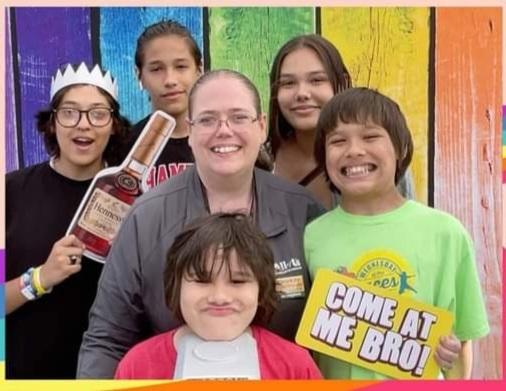Last year, doctors discovered a benign tumor on Amber Lightfeather’s brain, just behind her left eye. The discovery threw her family into crisis mode. Her son, a seventh-grader at the time, found himself struggling with his schoolwork while grappling with the emotional toll of supporting his ailing mother.
His school stepped up to help him — and his family.
Lincoln Park Middle School in Duluth, Minnesota, sent her son home with grocery store gift cards and food from the school’s food pantry for his family. Teachers and staff offered extra help to ensure her son completed his homework and made sure he had someone to talk to when needed and got home safely after school.
“The school was fully supporting my son,” Lightfeather said. “They really empowered him to feel like he was helping his mom.”
Lincoln Park Middle School is a “community school,” a type of school that provides comprehensive academic, health, social and family support services. It’s a model that’s become increasingly popular in, well, communities across the country.

Courtesy of Amber Lightfeather
Amber Lightfeather and her children.
New federal data released this month show 60% of public schools reported using a community school or wraparound service model. That’s a substantial increase from the 45% reported last school year.
For decades, the community school model has been used to help children and teens, especially in low-income neighborhoods, succeed academically by providing extra support to students and their families outside the scope of the typical classroom.
The pandemic and increased funding opportunities, including federal money, have made the community school model more popular nationwide, as schools are increasingly recognizing the value of addressing students’ needs. Some community schools offer families housing assistance, job training or on-site medical care, but the most common services are mental health services and food.
The National Education Association advocates for community schools at the national level and helps school districts start new community schools.
“More and more students are coming to school hungry, many face unstable housing situations or move frequently, and many do not have access to regular pediatric well-visits,” NEA President Becky Pringle said. “Community schools meet the unique needs of their students head-on.”
Federal funding for community schools was nonexistent in 2010 but got a massive endorsement from the Biden Administration in 2021 with $70 million in new federal funding and another $150 million in 2023.
“Research has shown that these schools contribute to increased student attendance, on-time grade progression, and high school graduation,” according to the 2023 White House memo.
The community school model is rooted in the idea that for kids to learn they need to have their basic needs met. Proponents of the community school model believe it can also improve teacher retention. They say that with dedicated personnel and resources for students, teachers no longer have to take on the role of a pseudo-social worker and can focus on education.
The increase in federal funding has brought a lot of attention to the model, according to Kelsey Gantzer, executive director of Duluth Community School Collaborative, a nonprofit contracted to advance the community school model in three public schools in the region, including through partnerships with various community organizations.
“In this school year alone, I’ve had conversations with three public school districts who say, ‘Hey, I want to do this, too,'” Gantzer said.
In 2001, the collaborative helped convert Duluth’s Grant Elementary to the community school model. The change came about after a door-knocking campaign among student families revealed they wanted free after-school and summer programs. The school now offers them.
Since its inception, the collaborative has expanded to encompass a middle school and a high school. The collaborative, in partnership with the district, embeds community school coordinators, as well as out-of-school, health and family coordinators at the schools it works with.
Community schools are about more than just community services, Gantzer said. They are about actively listening to the community.
Even before Amber Lightfeather faced her brain tumor health scare, she was actively involved in a Duluth Collaborative parent committee. As an American Indian and with all five of her children attending community schools, Lightfeather suggested the community schools her children attend hire more staff of color to better represent the student body.
The school listened and hired a staff of color, she said.
Even after Lightfeather’s oldest son graduated, the collaborative provided transportation after he flipped his car in an accident and provided counseling to help with some emotional issues.
“I don’t know why everybody doesn’t do it,” Lightfeather said of the community school model. “It benefits the kid, and it benefits the families.”
***
Brian Rinker is a Pennsylvania-based journalist who covers public health, child welfare, digital health, startups and venture capital.




























